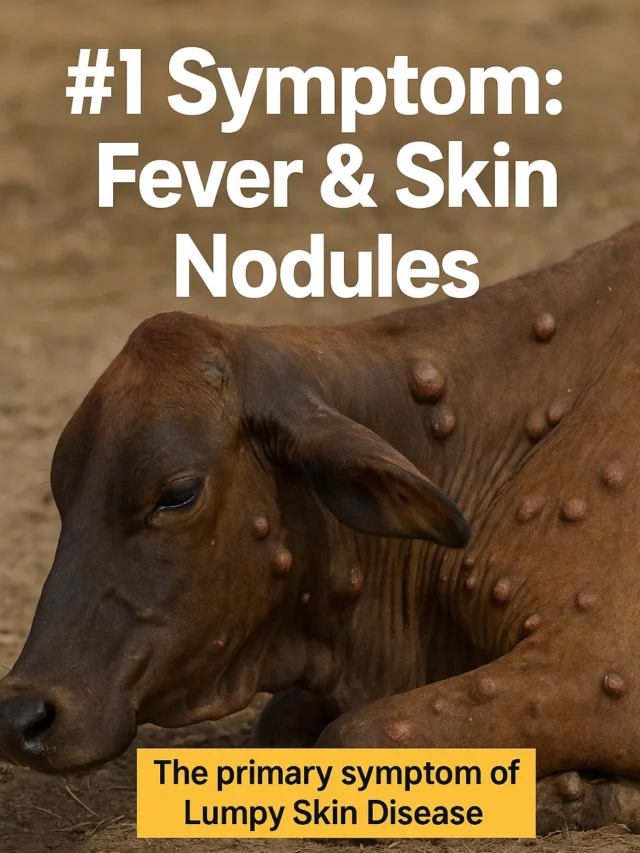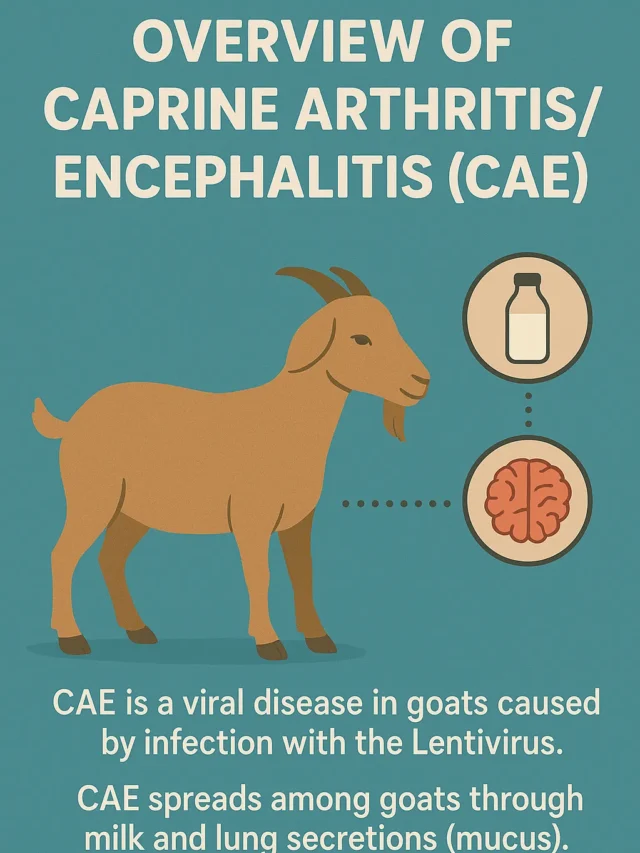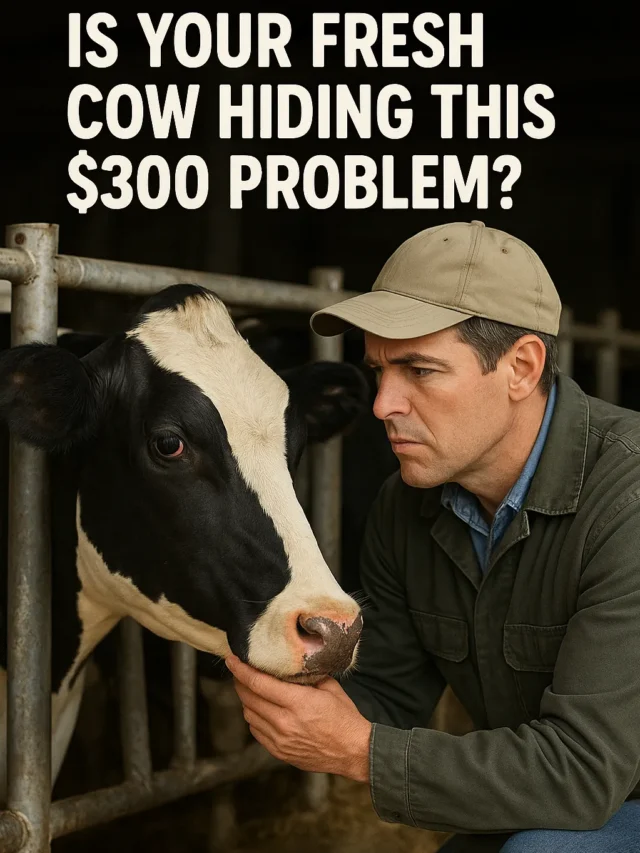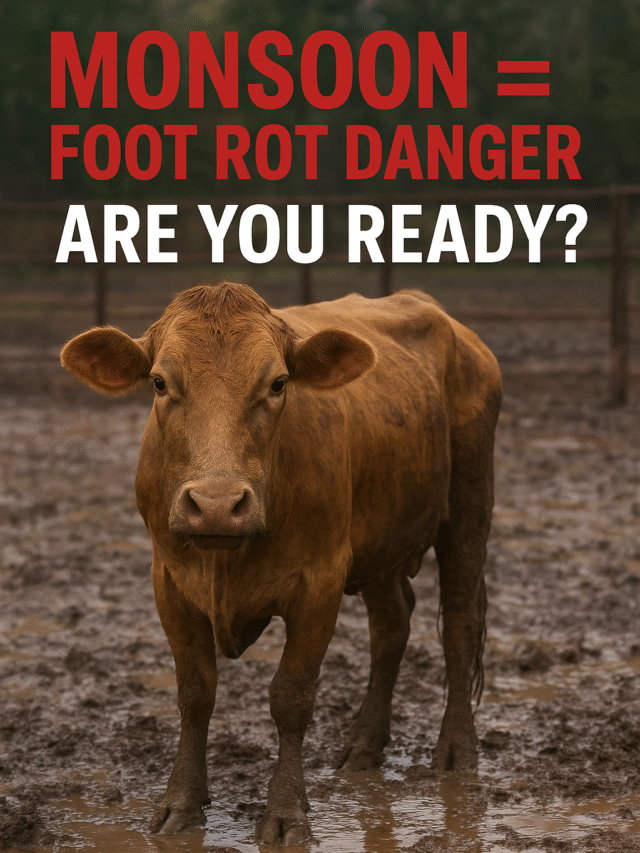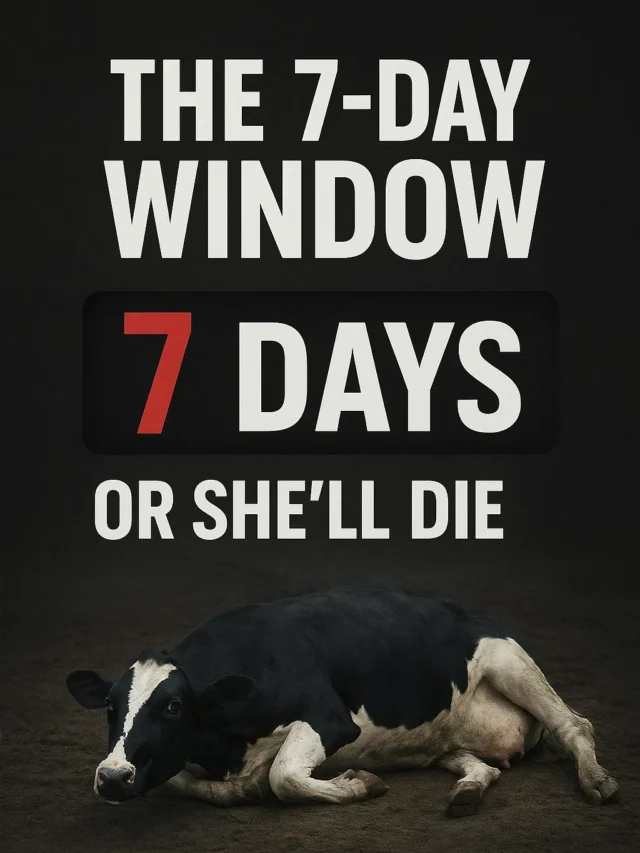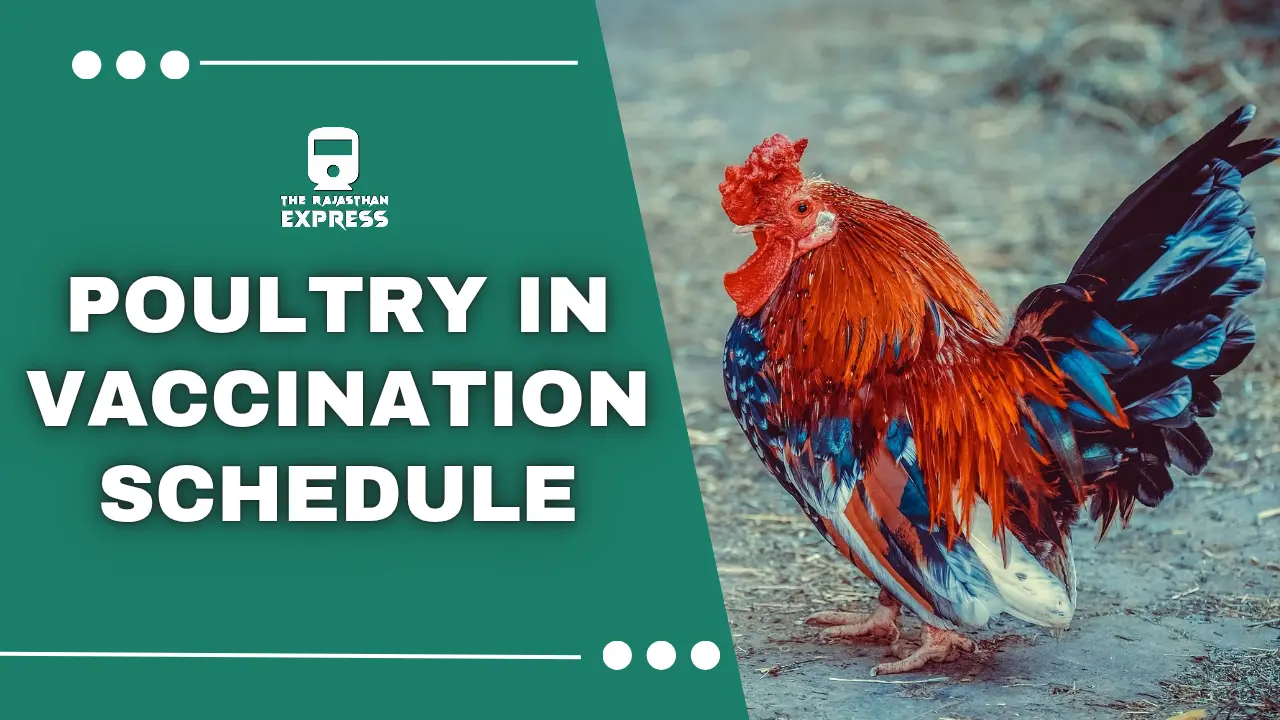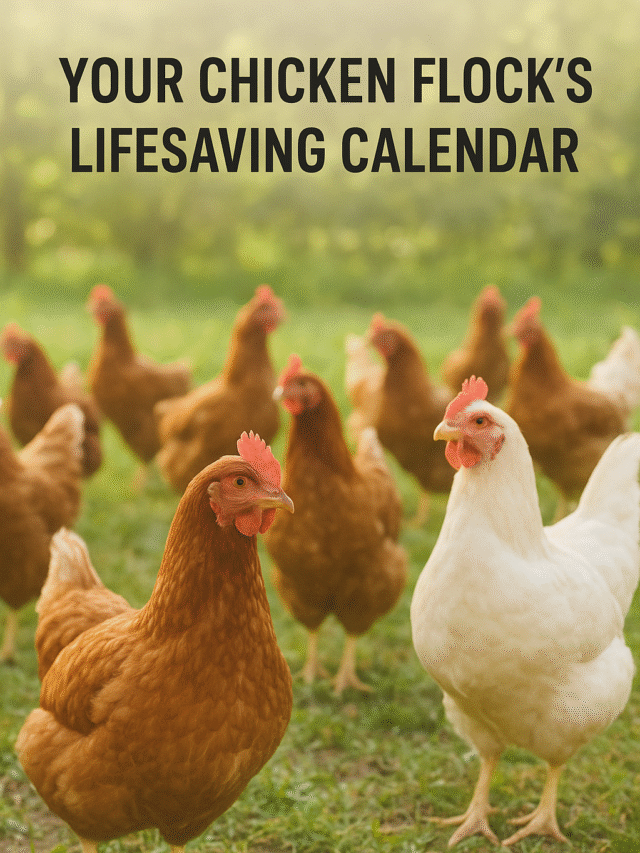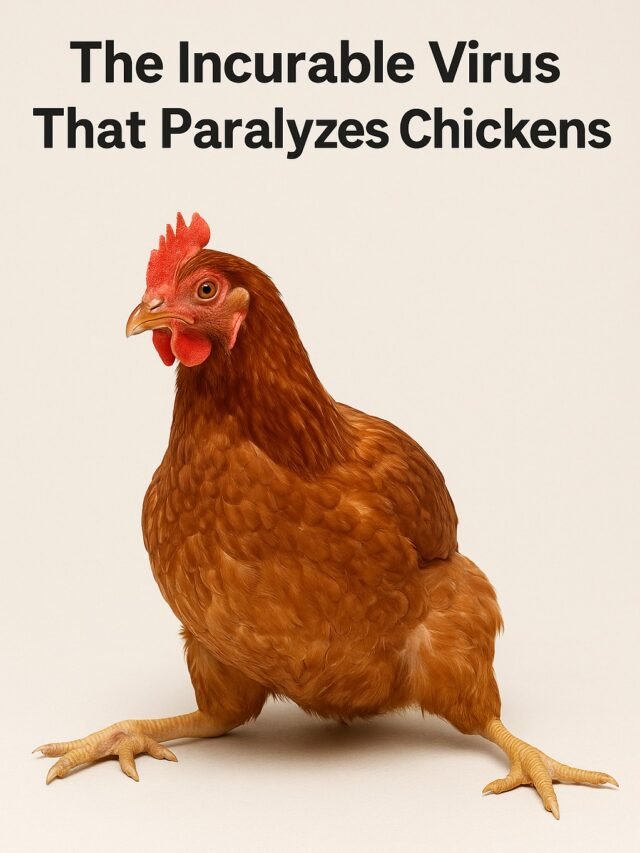Essential Poultry Vaccination Schedule for Healthy Flocks
Today, we and our environment are surrounded by pollution, which is giving rise to new diseases every day. Its impact is not only on humans but also on the trees, plants, animals, and birds around us. Like humans, new diseases are emerging in animals and birds, which are causing significant economic losses to farmers.
In a developing country like India, where animal husbandry plays an important role in economic development, an outbreak of any epidemic in livestock can have a profound effect on the country’s economy.
While the search for cures for new diseases continues, diseases that already exist and have vaccines available, if not vaccinated on time, can also lead to significant economic losses. Due to some misconceptions and lack of information, many livestock farmers fail to vaccinate their animals, which results in economic losses.

If vaccinations are not done on time, diseases spread from one animal to another and turn into epidemics. This has a severe impact on the health system, economic progress, and livestock population in the region. The only solution to avoid these problems is to vaccinate animals for diseases with available vaccines on time and to make farmers aware of the benefits of vaccination.
For smooth poultry farming, it is essential to vaccinate the chickens in the farm on time. This vaccination helps protect the chickens from infectious bacterial and viral diseases. Once these diseases spread, there is no effective treatment, and the only way to prevent them is vaccination. However, this is only effective when done at the right time and in the correct manner.
Vaccination plays a crucial role in maintaining the good health of chickens. It protects the birds from various infectious diseases that could lead to serious economic losses.
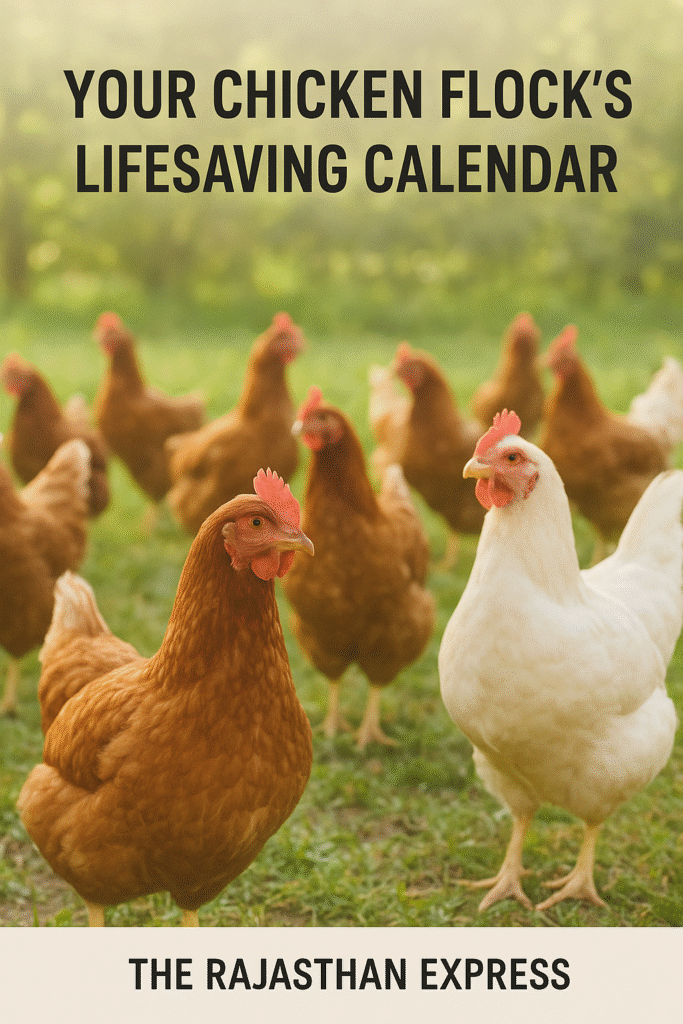
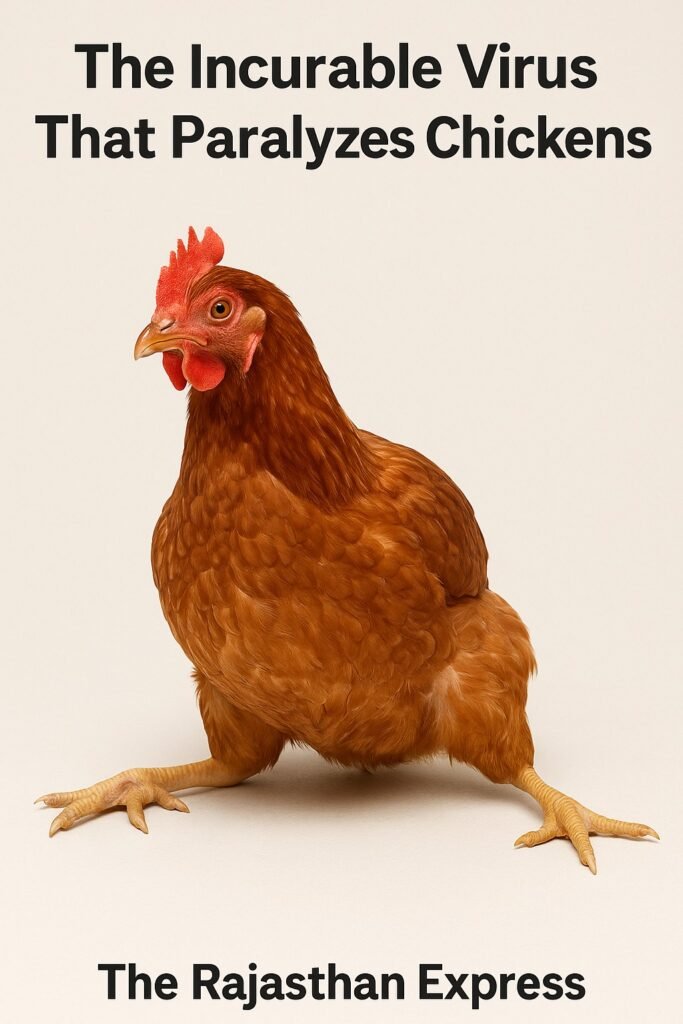
Poultry Vaccination Schedule
| Scientific Classification |
|
|---|---|
| Vaccination Benefits |
|
| Common Vaccines |
|
| Vaccination Age |
|
| Vaccination Routes |
|
| Precautions |
|
| The Rajasthan Express: Poultry Vaccination Schedule | |
Vaccine
A vaccine is a medicine given to develop active immunity in the body against infectious diseases. Its main purpose is to prepare the immune system of the body to protect the individual or animal from specific diseases.
History of the Term “Vaccine”
The term “vaccine” was first coined by Edward Jenner. The first vaccine discovered was the smallpox vaccine, which was developed by Edward Jenner in 1796 using the Cowpox Virus. This vaccine was used to prevent the smallpox disease in humans. The word “vaccine” is derived from the Vaccinia Virus (Cowpox Virus).
General Science of Vaccines:
Most vaccines contain antigens that are administered in an inactive form.
Precautions Before Vaccination in Chickens:
Health Check:
- Before vaccination, ensure that the chicken is in perfect health. If the chicken is suffering from any disease, do not vaccinate it.
Deworming:
- Before vaccination, ensure that the chicken has been dewormed (treated for intestinal worms).
Vaccinate Only Healthy Birds:
- Vaccination should only be given to completely healthy chickens. Do not vaccinate sick birds, as the antigens in the vaccine could worsen the condition of the already sick bird.
Correct Method of Vaccine Administration:
- Most animals receive vaccines through subcutaneous (under the skin) injections. However, vaccines for chickens can be administered through the following methods:
- Subcutaneous (S/C): Injection under the skin.
- Intramuscular (I/M): Injection into the muscles.
- Oral: Administering the vaccine through the mouth.
- Eye Drop (Intra Ocular): Administering the vaccine through the eye.
- Intra Nasal: Administering the vaccine through the nose.
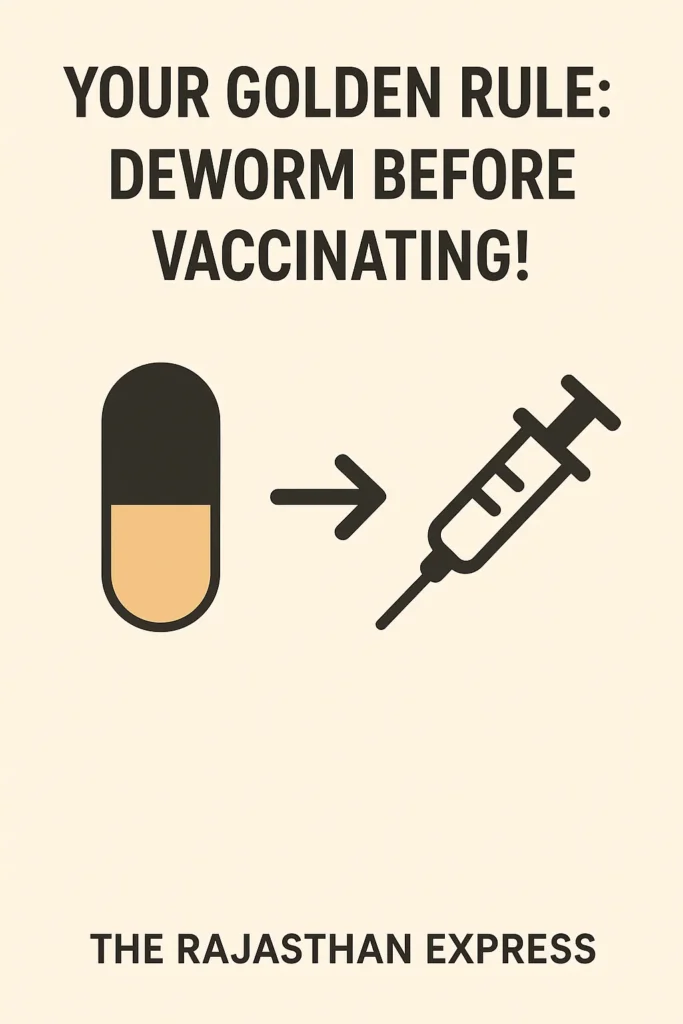
Key Benefits of Poultry Vaccination:
- Protects birds from infectious diseases.
- Reduces mortality rates.
- Ensures better productivity in terms of egg and meat production.
- Minimizes economic losses for farmers.
Classification of Poultry
Poultry can be broadly classified into two categories based on their purpose:
Broiler Birds:
Raised for meat production; vaccinated against diseases that might affect them during their short lifecycle (6-8 weeks).
Layer Birds:
Raised for egg production; require extensive vaccination due to their longer lifespan.
In layer chickens, vaccination is done against all types of diseases since their productivity lasts for a long period. On the other hand, in broiler chickens, vaccination is done only for those diseases that may infect them during their 6-8 week lifespan.
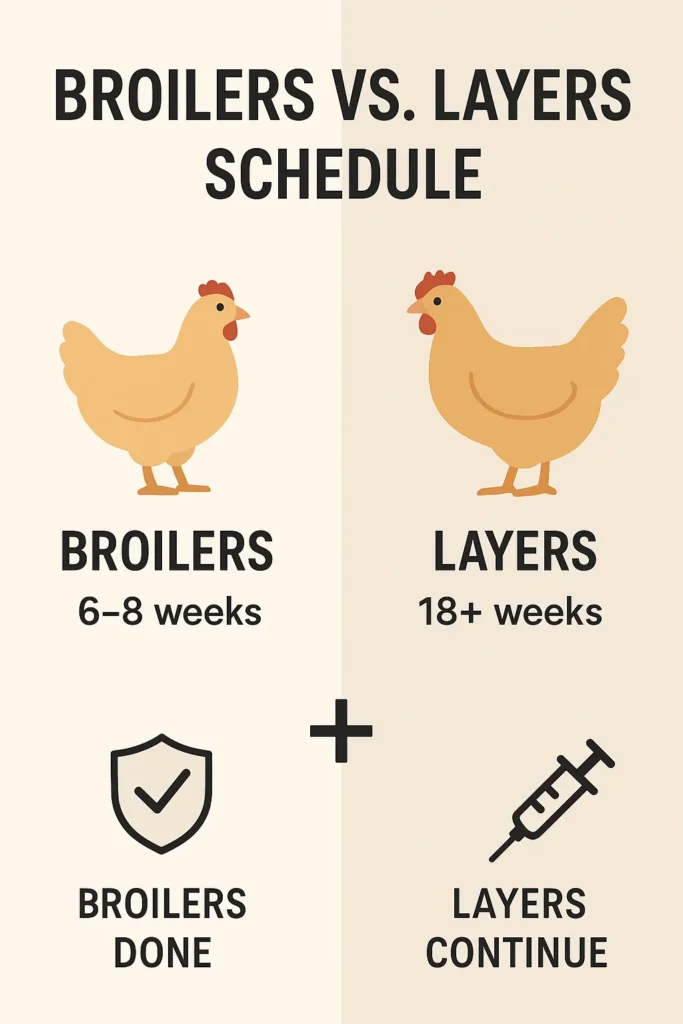
Viral Diseases in Chickens
Viral diseases in poultry farming cause significant losses every year. Some of these diseases are zoonotic, meaning they can not only threaten the health of chickens but can also affect human health.
There are several types of viral diseases found in chickens, but the commonly observed major diseases are as follows:
- Marek’s Disease
- Ranikhet Disease: This is a zoonotic disease that can spread from chickens to humans.
- Gumboro Disease (Infectious Bursal Disease)
- Bird Flu / Avian Influenza (Fowl Plague): This is a zoonotic disease that can spread from chickens to humans.
- Fowl Pox / Avian Pox

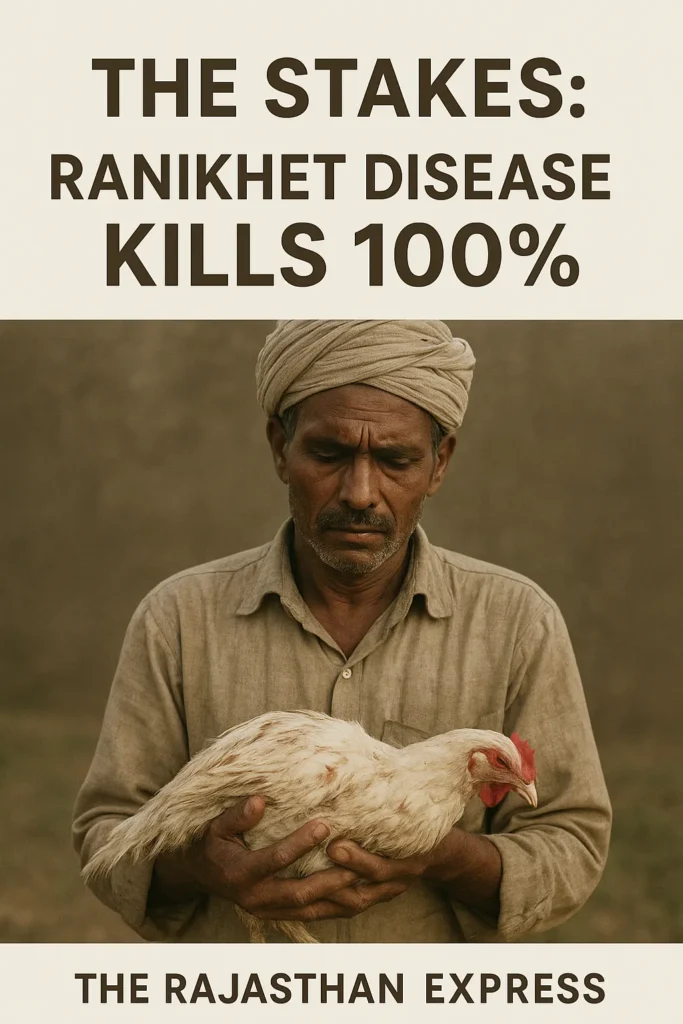
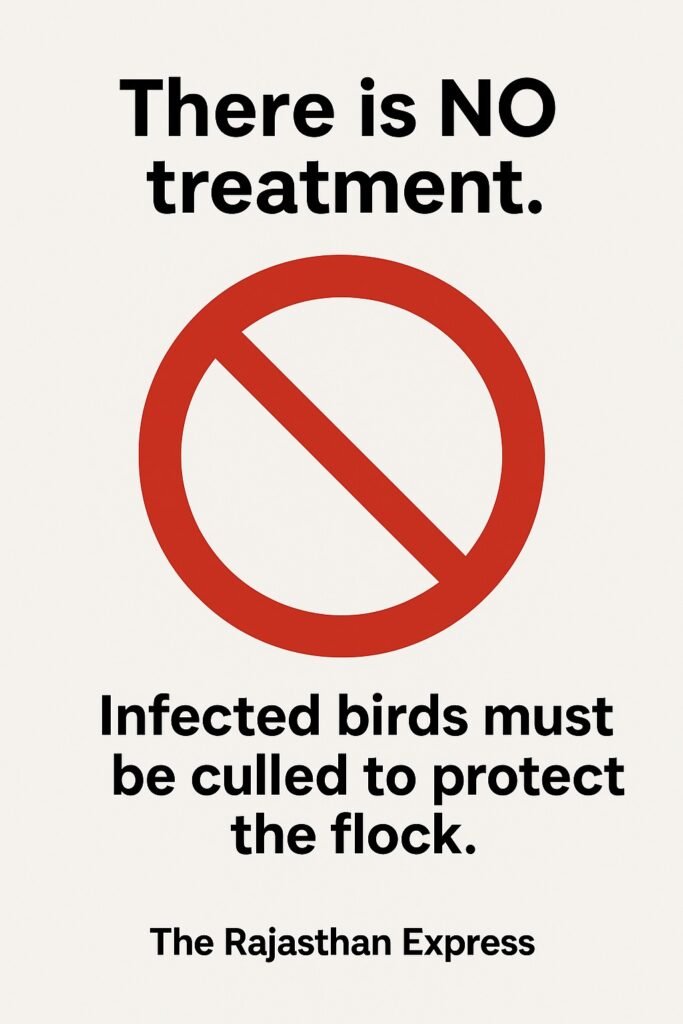
Read More About : Marek’s Disease in Chickens: Symptoms, Causes, Treatment, and Prevention
1. Marek’s Disease (MD):
Other Names:
It is also known as Neural Leukosis and Range Paralysis (in this disease, poultry cannot walk).
Causing Virus:
Marek’s disease is a lymphomatous and neuropathic disease caused by the Alpha-Herpesvirus (Marek’s Disease Virus – MDV). It is a highly contagious and neoplastic disease found in chickens. The disease is named after the Hungarian veterinarian Joseph Marek, who first identified it in 1907.

Transmission:
Birds get infected with this disease by coming into contact with contaminated dust in poultry houses.
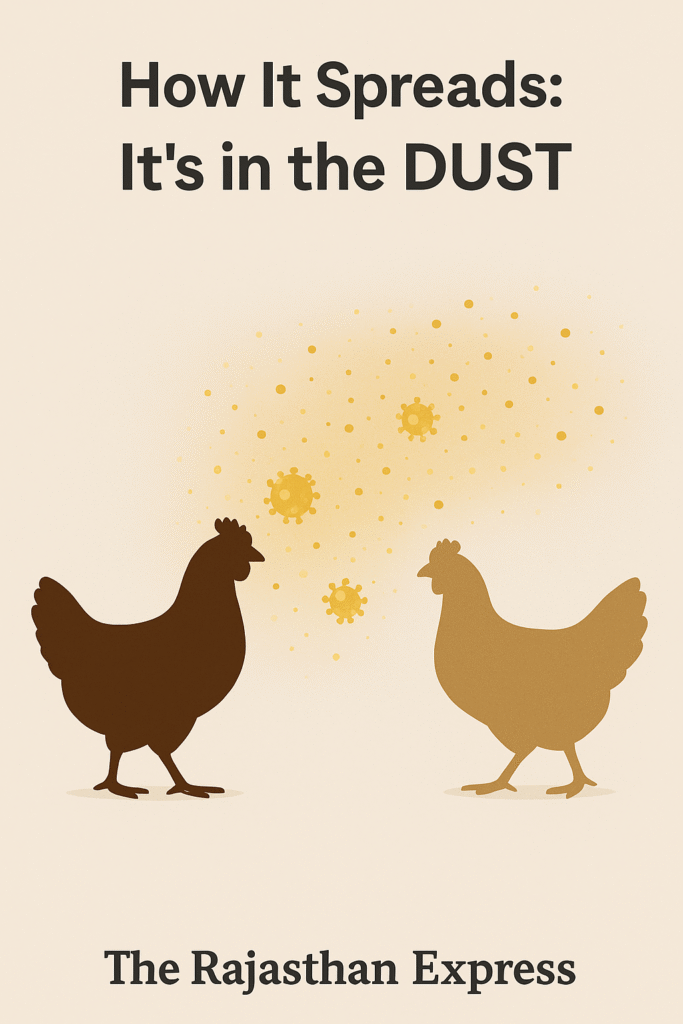
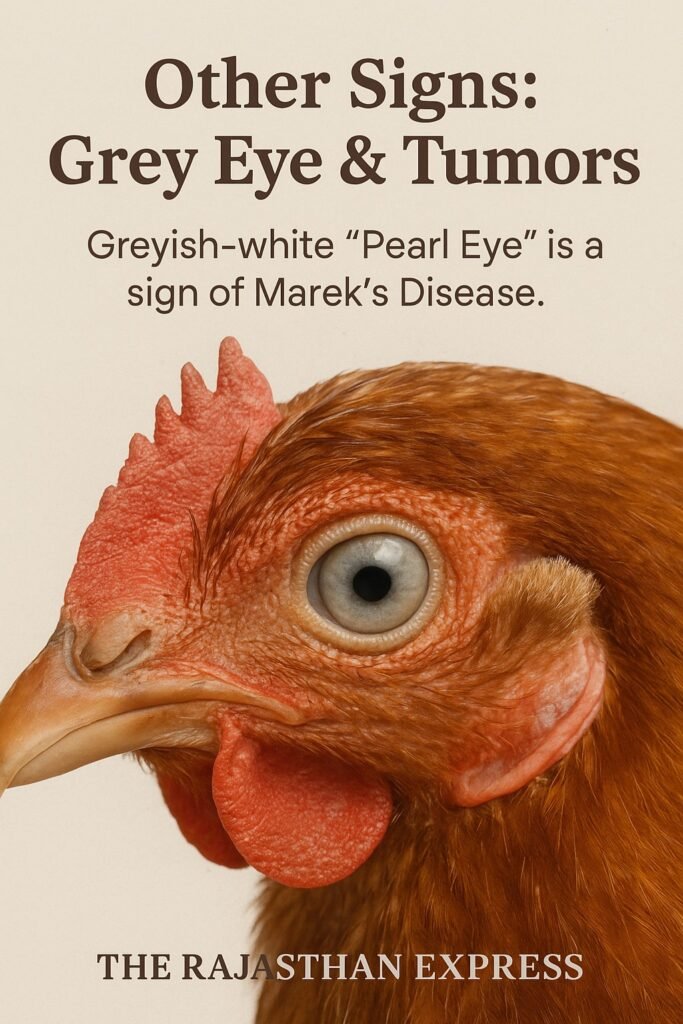
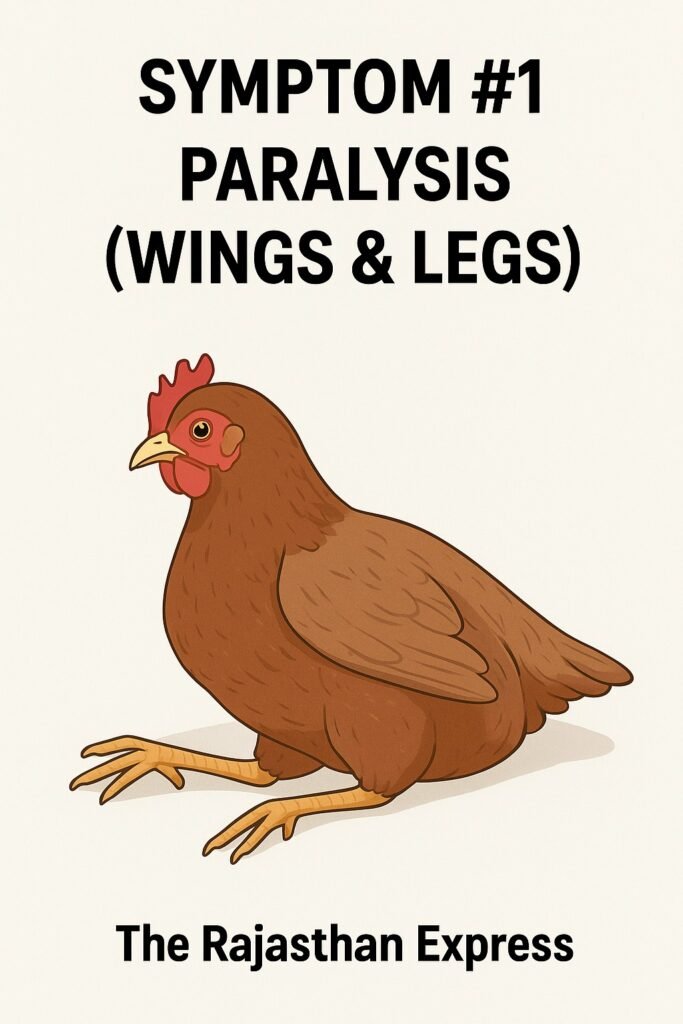
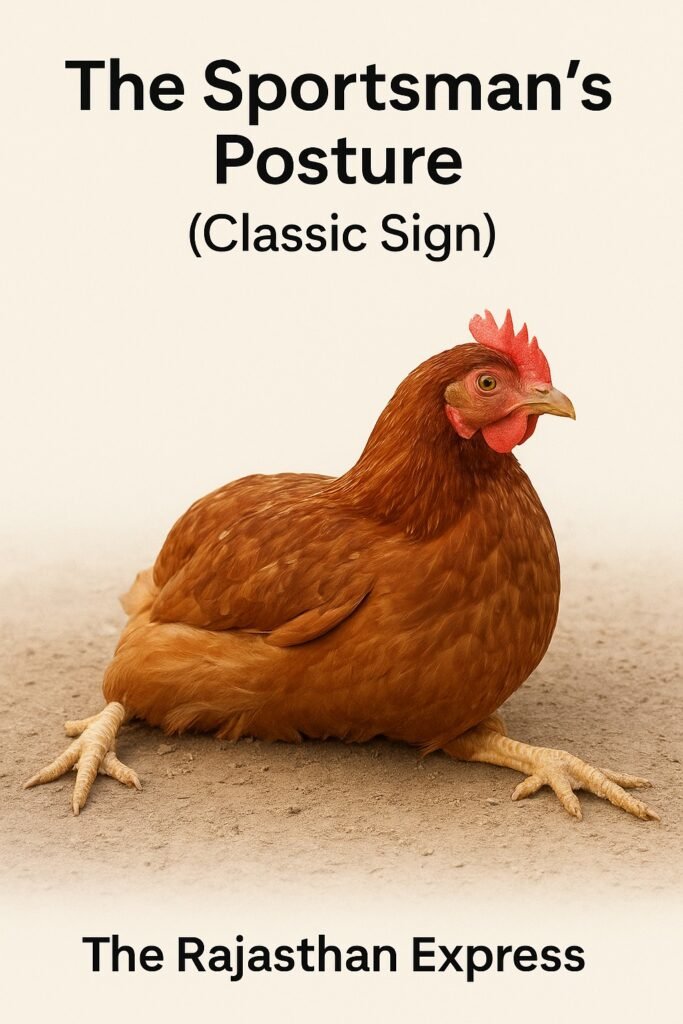
Vaccination / Prevention:
Vaccination for Marek’s Disease is done in chickens at 1 day of age.
Vaccine: HVT – MD Vaccine (Herpes Virus Turkey)
Dose: 0.2 mL
Age: 1 Day Old Chick
Route: Subcutaneous (S/C)
This vaccine provides protection to chickens against the virus.
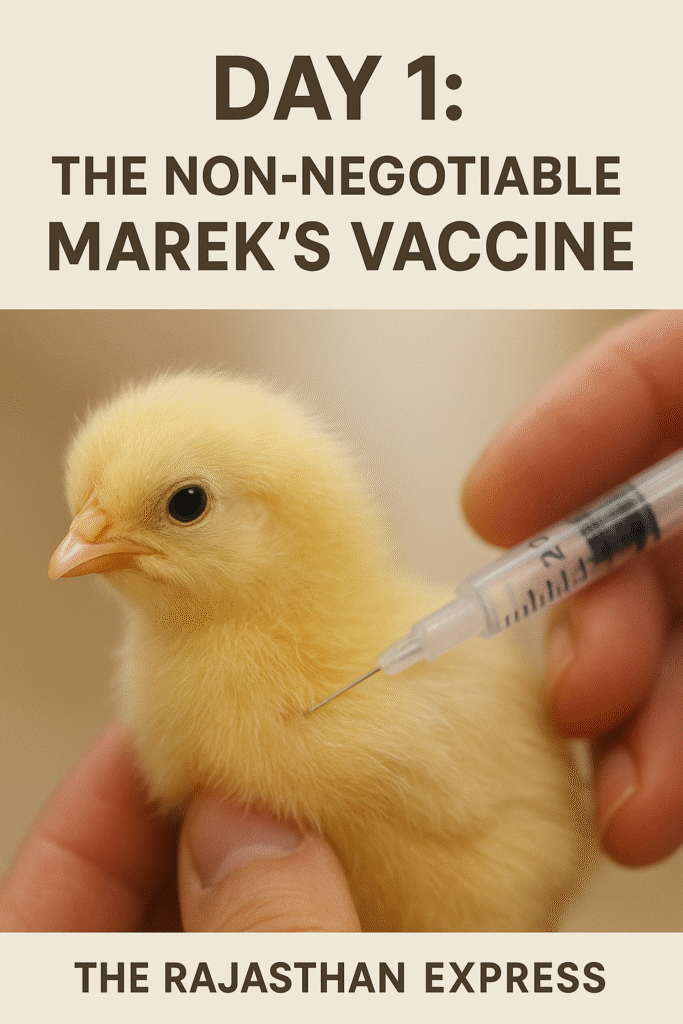
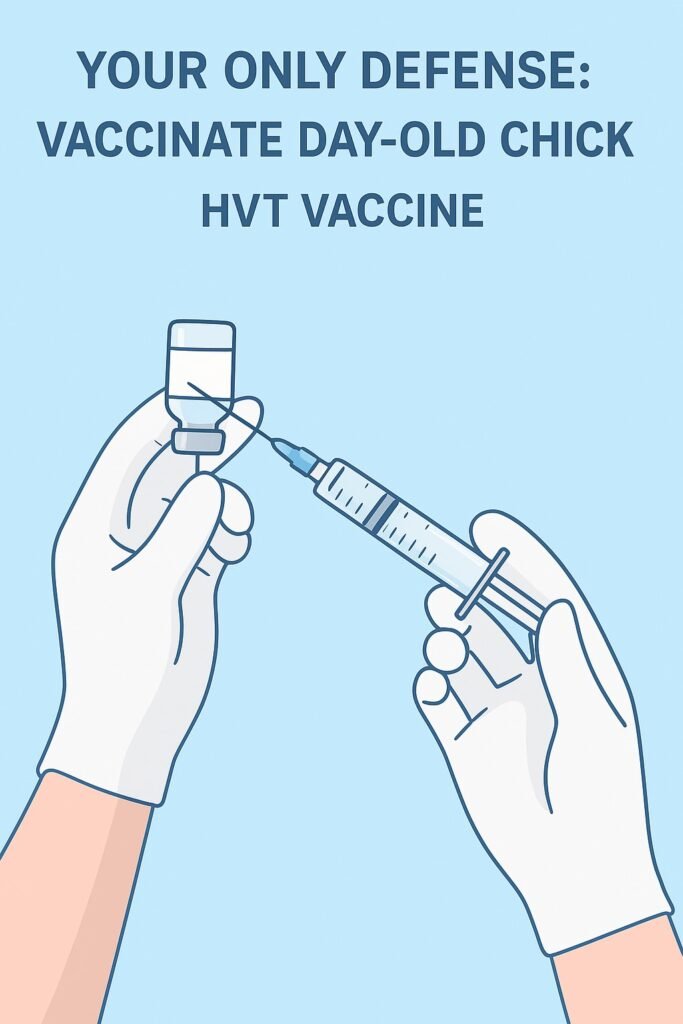
2. Ranikhet Disease:
Other Names:
It is also called Newcastle Disease and Doyl Disease.
History:
This disease was first identified in 1926 in Newcastle, England by a scientist named Doyl. In India, it was first found in 1927 in the Ranikhet city of Uttarakhand state, which is why it was named Ranikhet Disease.
Causing Virus:
Ranikhet disease is caused by the Avula Virus (Paramyxovirus – Paramyxoviridae).

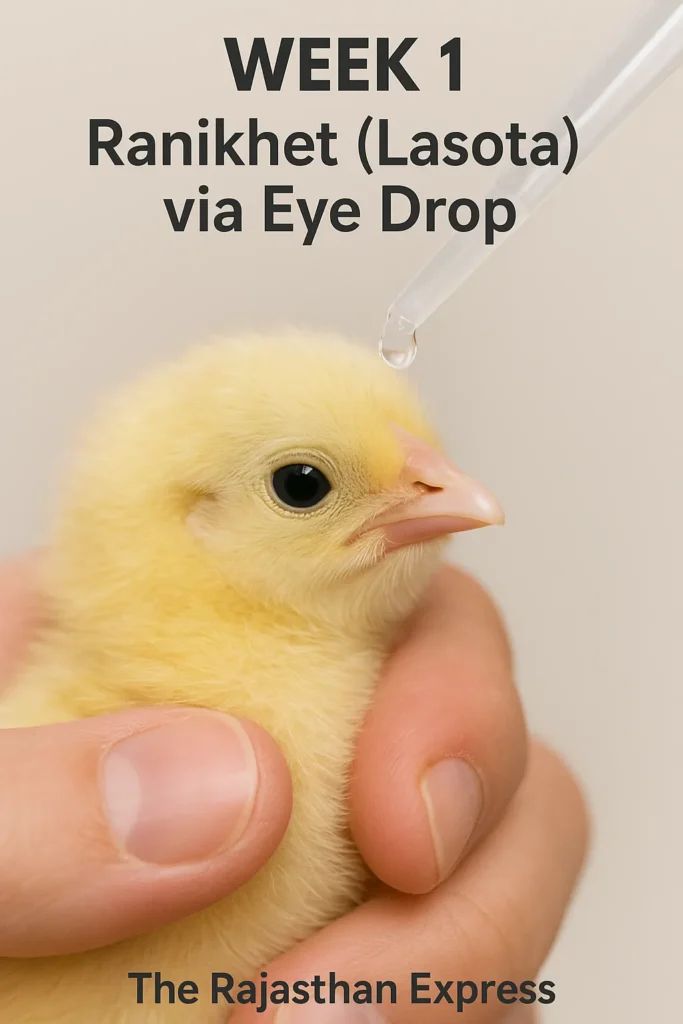
Vaccination / Prevention:
- Lasota Vaccine (F-Strain):
Primary vaccine: At 7 days of age.
Booster vaccine: After 4-5 weeks.
Route: Intra Ocular (Eye Drop) / Intra Nasal - Mukteshwar Vaccine (R2B Vaccine):
Primary vaccine: At 8-10 weeks of age.
Booster vaccine: At 16-18 weeks of age.
Route: 0.5 mL, S/C, I/M
3. Gumboro Disease (Infectious Bursal Disease):
Age:
This disease is primarily seen in chickens between 3 to 6 weeks of age.
Causing Virus:
Birna Virus
Effect:
This disease affects the Bursa of Fabricius organ in chickens, leading to the destruction of B-Lymphocytes in the body. This results in the loss of humoral immunity.
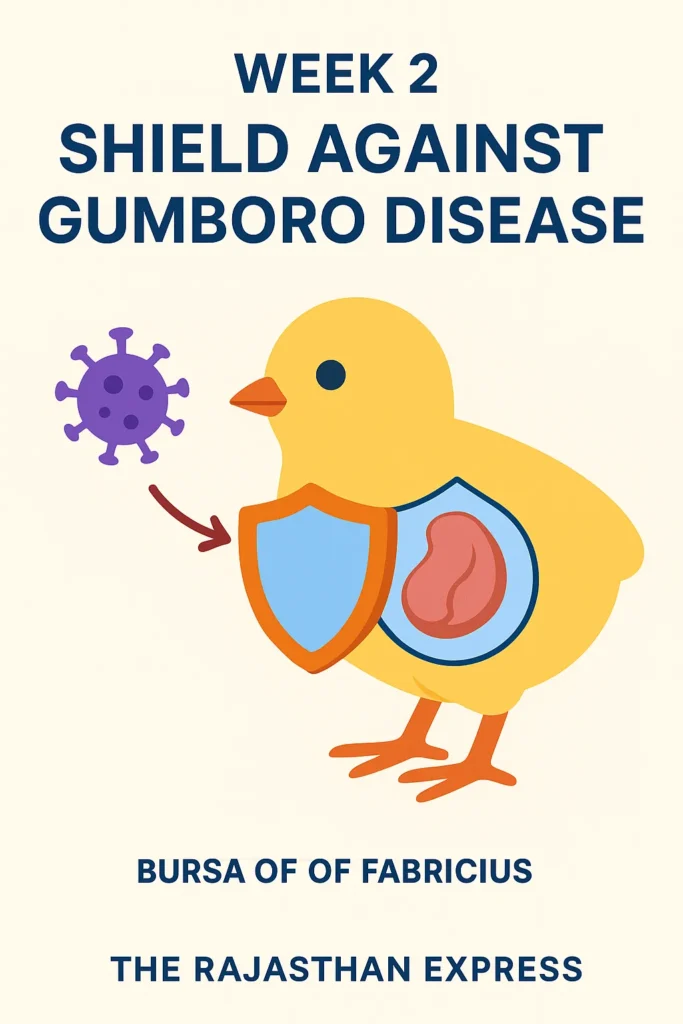
Symptoms:
In Gumboro disease, only the humoral immunity is destroyed.
In Marek’s disease, both humoral immunity and cell-mediated immunity are destroyed.
Vaccination / Prevention:
- Georgia Vaccine:
Age: 2 weeks (14 days)
This vaccine is generally not used anymore. - Lukert Strain Vaccine:
Age: From birth to 7 days of age.
Route: Intra Ocular (Eye Drop) / Intra Nasal
4. Fowl Pox (Avian Pox):
Causing Virus:
This disease is caused by the Avi Pox Virus.
Symptoms:
It causes sores and lesions on the skin, around the mouth, and eyes of chickens.
5. Bird Flu / Avian Influenza (Fowl Plague):
Avian Influenza, commonly known as Bird Flu, is a zoonotic disease. This means it can spread from birds to humans. The disease is primarily caused by the H5N1 Avian Influenza Virus.
Symptoms:
- Coughing
- Frequent sneezing
- Reduction in egg production
- Respiratory distress


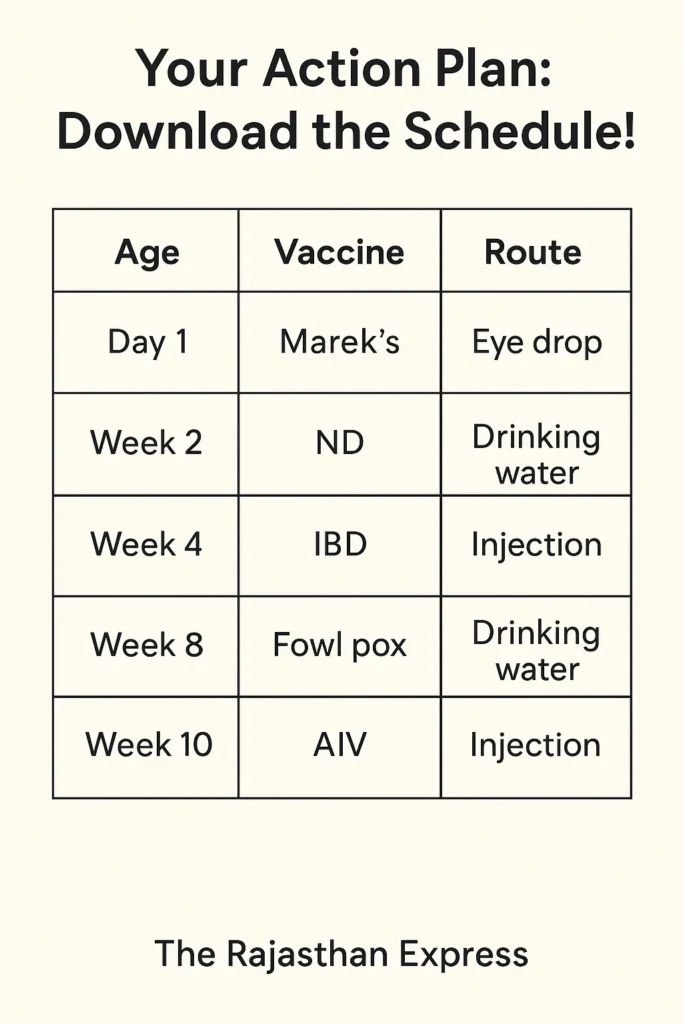
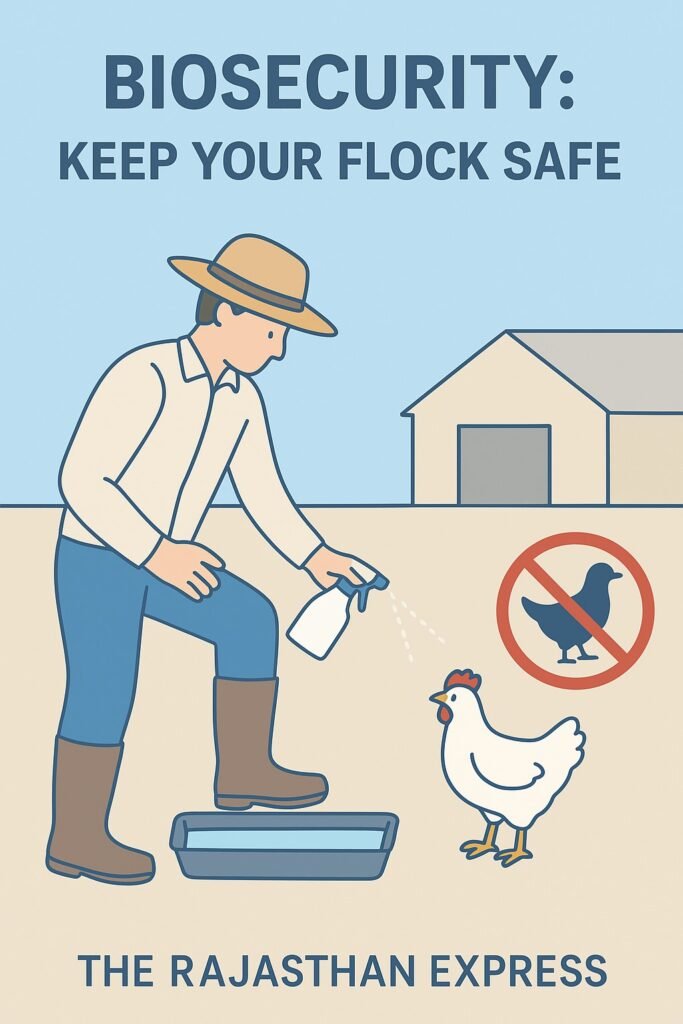

| The Rajasthan Express: Poultry Vaccination Schedule | |||||
| Disease | Vaccine Name | Age | Route | Dosage | Booster Dose |
|---|---|---|---|---|---|
| Marek Disease | HVT – MD Vaccine (Herpes Virus Turkey) | 1 Day Old Chick | S/C (Subcutaneous) | 0.2 mL | Not Applicable |
| Ranikhet Disease | Lasota Vaccine (F – Strain) | Primary: 7 Days Old | Intra Ocular (Eye Drop) / Intra Nasal | As Per Manufacturer’s Recommendation | Booster: 4-5 Weeks Later |
| Mukteshwar Vaccine (R2B Vaccine) | Primary: 8-10 Weeks Old | 0.5 mL, S/C or I/M | 0.5 mL | Booster: 16-18 Weeks Old | |
| Gumboro Disease | Georgia Vaccine | 2 Weeks (14 Days Old) | As Per Manufacturer’s Recommendation | As Per Manufacturer’s Recommendation | Not Commonly Used |
| Lukert Strain Vaccine | Birth to 7 Days Old | Intra Ocular (Eye Drop) / Intra Nasal | As Per Manufacturer’s Recommendation | Not Applicable | |
| The Rajasthan Express: Poultry Vaccination Schedule | |||||
Learn about common poultry diseases such as Marek’s disease, Newcastle disease, Gumboro disease, and more. Understand the vaccines used to protect chickens from these diseases, including the Marek’s, Newcastle, and Gumboro vaccines. Find answers to frequently asked questions about the symptoms, causes, and treatments for these dangerous diseases, and discover the best practices for keeping your flock healthy.
THE RAJASTHAN EXPRESS
People Also Ask
Which vaccine is administered on the first day in the poultry industry?
What are the common diseases in chickens?
Which is the most dangerous disease in chickens?
Which is the most common disease that causes death in chickens?
How should the Newcastle disease vaccine be given?
- Lasota Vaccine is given at 7 days of age and then a booster is given after 4-5 weeks.
- Mukteshwar Vaccine is given at 8-10 weeks of age, and then a booster is given after 16-18 weeks.
